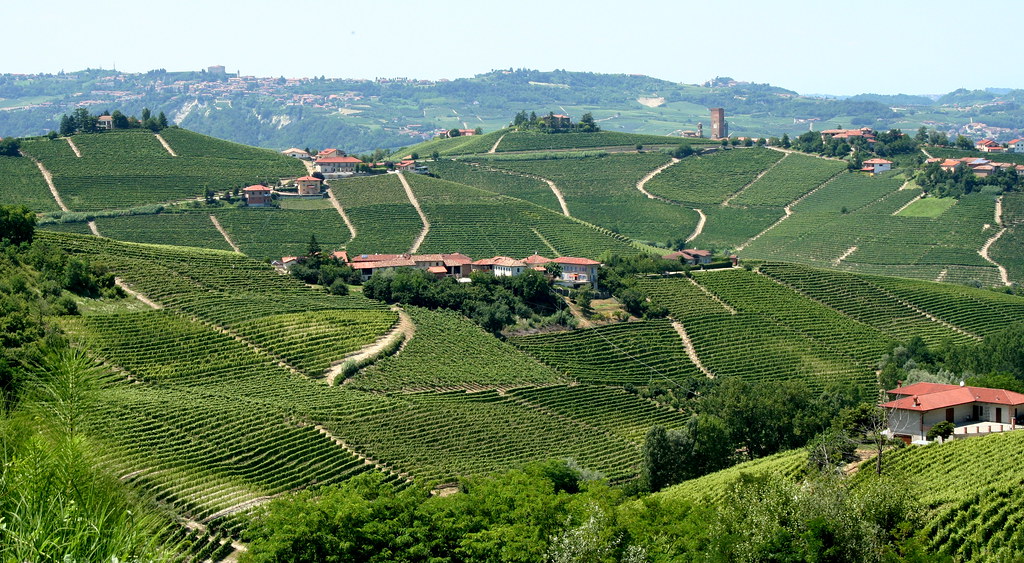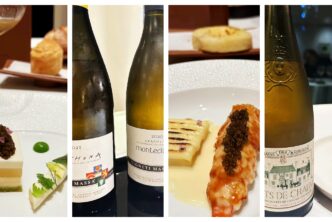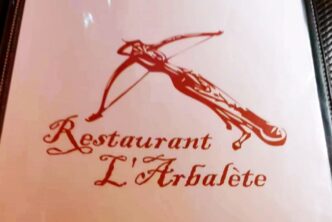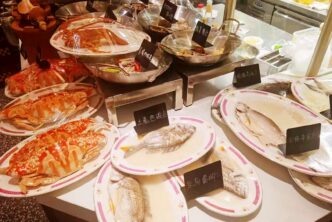Some places have all the luck. Just about any spot down here on Earth lucky enough to be making one of the world’s best wines would be counting its lucky stars and feel like it had won the lottery. Barbaresco, the wine denomination located in the Langhe area of the Piedmont region in north-western Italy, is such one place, given that it makes one of the world’s ten greatest red wines. And so, it’s not like the place really needs anything else to boast about: but Barbaresco (and the Langhe) do have something else to boast about. A lot else, in fact.
For example, most everyone worthy of their “foodie” status is well aware of the incredibly perfumed white truffles that Piedmont and the Langhe in particular are associated with (but in fact, so are many other regions of Italy). However, truffles are only part of the gastronomic bounty of this neck of the Italian woods. And what might surprise some foodies and wine lovers is that many of their favorite Barbaresco wineries produce not just wine, but also make food products that rank with the world’s best. Clearly, this is in no small measure due to the extremely high quality of the foodstuffs to begin with. That statement shouldn’t come as much of a surprise, given how sybarites from all over the world flock to Piedmont to revel not just in the wine cellars but to the area’s many fine restaurants too. In fact, Barbaresco and the Langhe are the home of numerous Michelin starred establishments (including three star and two star spots, not to mention a plethora of one Michelin star stops), but even the many simple osterie (that are in fact anything but “simple”) that literally dot the countryside everywhere are amongst the finest dining destinations you will ever come across. Bollito misto, vitello tonnato, bagna cauda, tajarin, agnolotti del plin, paste di meliga, baci di Cherasco, bagnet ross and bagnet vert, carne cruda all’Albese, krumiri, pollo alla Marengo, pere della Madernassa, brasato al Barolo, panissa, bonèt (or bunèt), finanziera, zabaione (sabayon), baci di dama, pollo or coniglio ai peperoni e aceto and many more still are just some of the foodstuffs and food recipes that give Barbaresco and the Langhe pride of gastronomic place. And I won’t even mention some Piedmont staples that are not specifically linked to Barbaresco and the Langhe but to the region as a whole, such as grissini (that’s right: did you know that breadsticks were invented by a Piedmontese for the Italy’s royal court?), gianduiotti and just about anything involving chocolate and hazelnuts (ever heard of Nutella, for example?), panna cotta and anything related to rice, all of which are inextricably linked to Piedmont.
Many food products of the Langhe deserve a writeup all of their own, such as for example the famous white truffles (so check out the TerroirSense Wine Review in January for an article on all things truffle), but so do rice, grissini and other foodstuffs that are actually even more associated with the rest of the region. Specific Piedmontese and Langhe recipes also deserve to be addressed, and I will broach them in another article, as do the many high-quality restaurants of the Langhe, that anyone who has followed my writings over the years are aware I know exceptionally well (not by chance I wrote a number of years for a famous Italian restaurant guide). In this article, I shall concentrate on describing a few specific food products that you may not immediately associate with Barbaresco and the Langhe specifically, or be aware that Piedmont and the Langhe are especially reputed for.
Honey
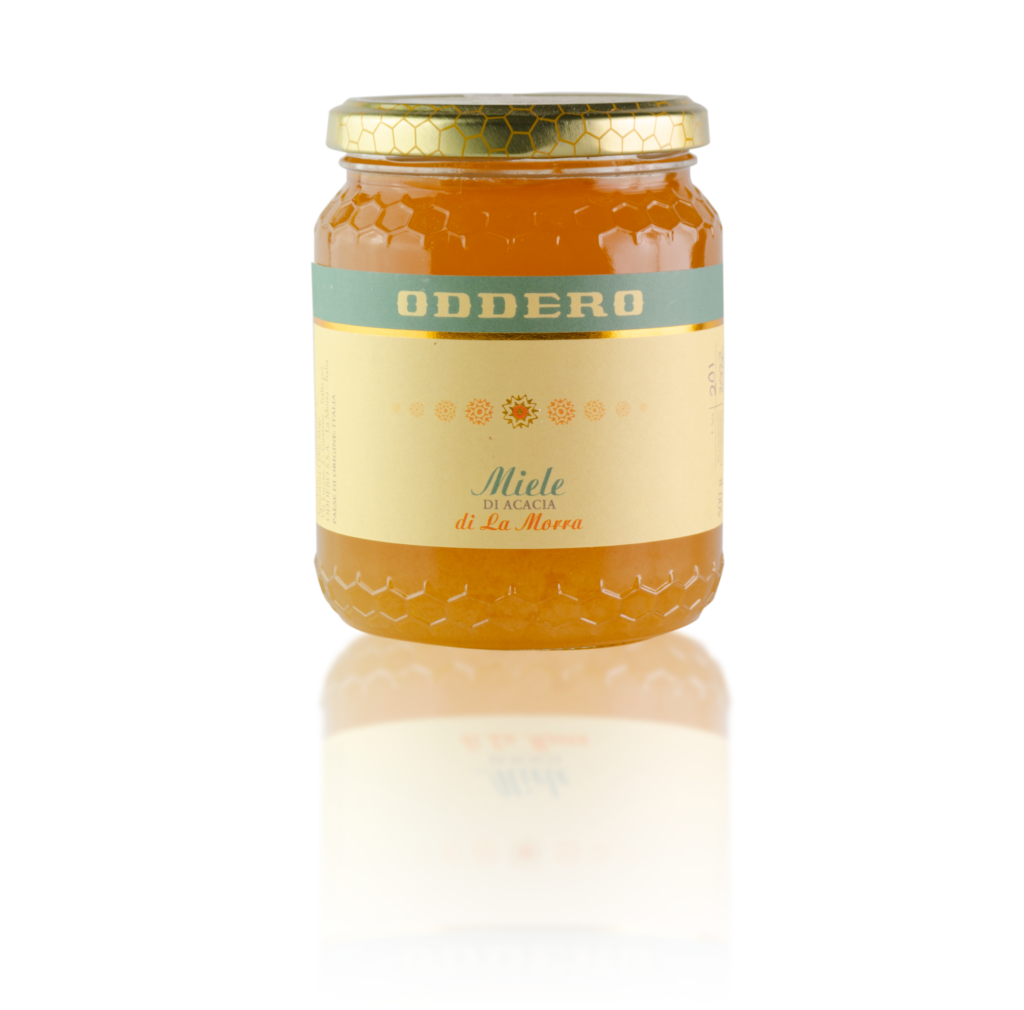
The word “honey” derives from the ancient Germanic word huna(n)go, which became honung in Old Norse, and then hunig in Old English. Throughout the centuries, the Old English habit of placing the letter “g” after an “i” or an “e” sound was slowly dropped or turned into a “y,” such that the Medieval hunig morphed into the word “honey’ in use today. Actually, in English language use, because in Italian for example the word for honey, miele, has a completely different origin, stemming from the Hittite term “milt” (for those who don’t know, the Hittites were an ancient Anatolian people that built one of antiquity’s largest empires and were amongst the first, if not the first, to manufacture and use advanced iron goods). What most people do know about honey is that there are many different kinds, as just about any flower can deliver it, bees willing (but not just bees, for that matter). However, not all honeys are the same: much like different grapes give different wines, different flowers give different honeys, and sometimes startingly so. For example, you may be aware that some honeys are pale yellow in colour, while others are dark yellow-orange, and some are downright amber-brown. But did you also know that not all honeys are sweet? Yes, believe it or not, some honeys are bitter: perhaps the best-known example of which is arbutus (strawberry tree) honey
For many trained and sophisticated palates, the most refined honey of all honey is acacia honey, beginning with its very pale lemon yellow colour (pale to the point of translucency, acacia honey looks like lemon yellow-hued liquid glass), and continuing through with its extremely delicate aroma and flavour. In fact, though it is commonly called “acacia” honey in Europe, acacia honey is not made from flowers of the acacia tree at all, but is derived instead from the nectar of the black locust or false acacia tree (Robinia pseudoacacia) flower. This is why in North America “acacia Honey” is sold with the name of either locust honey or American acacia honey. And while I’m at it, for all my green-thumbed readers, beware of confusing the real acacia tree and the false acacia tree with the honey locust tree (Gleditsia triacanthos), which despite its name is not a honey producing plant at all (that confusion-inducing name derives from the sweet tasting pulp of the pod-shaped fruit of the tree American Indians used as food). In any case, acacia/black locust honey is a perfect, and healthier, replacement for traditional sugar as it does not add a strong flavour to whatever it is used to sweeten. Even more importantly, because of its especially high fructose content, it is the one honey that practically never crystallizes (in other words, it does not turn solid in your jar like almost all other honeys will). Producers of Barbaresco wine who make an excellent honey: Oddero (an estate established in the eighteenth century, the Oddero family is one of the oldest in La Morra and has long been associated with traditionally-made, excellent Barbaresco and Barolos, not to mention many other wines. Their acacia honey is also outstanding, so make sure you look for it next time in the area).
Hazelnuts
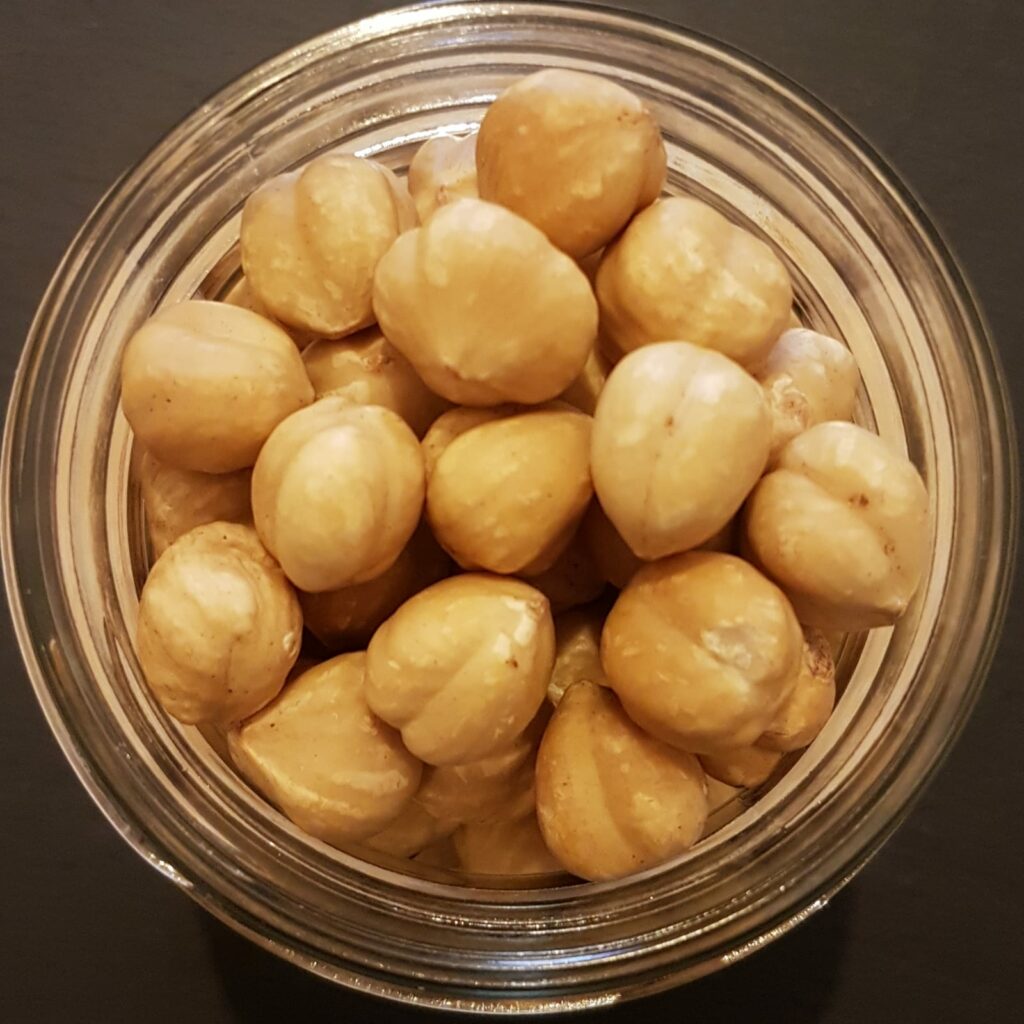
There’s no way to say this nicely, so I may as well be blunt: the Piedmontese hazelnut is the best in the world. Other countries such as Turkey grow very good hazelnuts and boast larger annual hazelnut production volumes than Italy, but it is a recognized fact that Piedmont’s nocciola gentile trilobata is simply the best with which to make confectionery products. The reasons for this are numerous but include easy shellability, long shelf life, intense and refined aroma and taste quite unlike that of any other hazelnut, and the roundness of the kernel. As it is characterized by a shape made of three obvious lobes, this Piedmontese hazelnut gained the name of trilobata or trilobed (check any of the hazelnuts you might have bought near your home: most often, they do not have three visible lobes but just various bumps. In other words, you can easily tell those are not the authentic tonda gentile trilobata of Piedmont (a much more expensive hazelnut, and with a little experience, their taste will tell you as much too). The hazelnut tree grows in all the temperate areas of the northern hemisphere, but its production in Piedmont is concentrated in the province of Cuneo (and Asti and Alessandria too); anyone who has visited the Barbaresco and Barolo area is well aware of just how common a sight hazelnut trees are everywhere in the region. Needless to say, the hazelnut marries extremely ell with chocolate, and the success of hazelnut-chocolate spreads all over the world, not to mention many chocolates containing hazelnuts, are proof of this. Many famous dishes of Piedmontese cuisine contain hazelnuts in their recipes, and this is something I will write about here in the TerroirSense Wine Review later in 2022. Some producers, such as Barbaresco’s Castello di Neive, choose to package their toasted hazelnuts in glass bottles in a modified atmosphere to preserve their fragrance and freshness, which allows to keep minimally toasted hazelnuts crunchy for a long time; other producers such as Abrigo Mauro and Adriano Marco and Vittorio choose the equally effective vacuum pack. Producers of Barbaresco wine who produce excellent hazelnuts: Abrigo Mauro, Adriano Marco e Vittorio, Cascina Rabaglio, Castello di Neive.
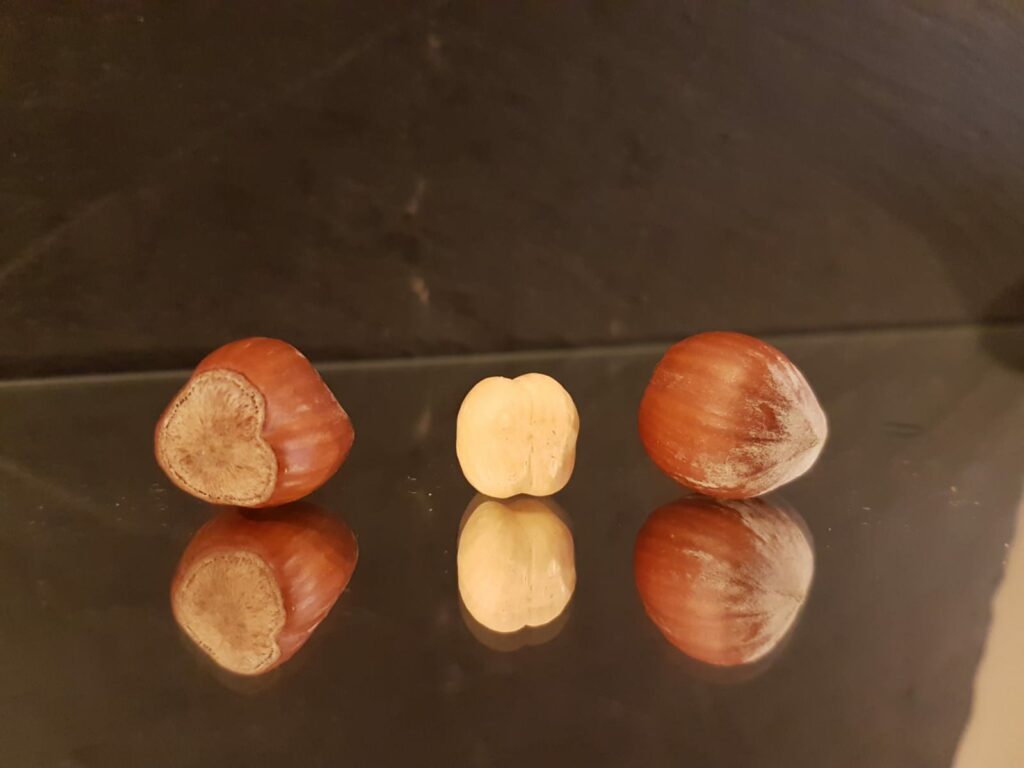
Composta di rosa canina (rosehip jam)
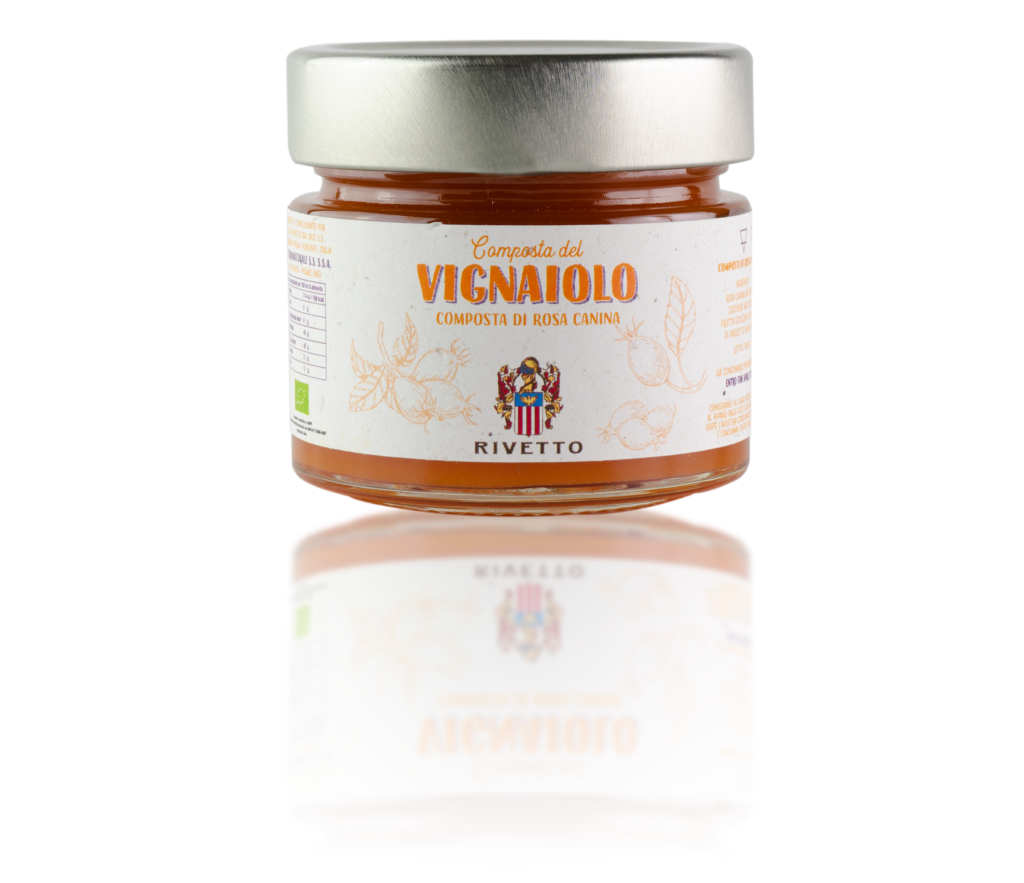
The wild rose or dog rose tree is a roughly 200 centimeter high, vigorous, deciduous climbing bush common in all the temperate zones of Europe (and northwest Africa and western Asia too). Populations there have been making jam with its reddish-orange hips for centuries. Rose hips taste slightly tart, much like crab apples do; in fact, though it is not commonly known, roses belong to the same family as apples and crab apples, which is why their fruits resemble mini crab apples. The best jams are basically made just with rosehips and sugar (though some lesser products are made with equal quantities of fruit and sugar, better products require as much 170 grams of fresh fruit to 100 grams of sugar in their preparation), but some producers add lemon juice and even apple pectin as a thickener (uhm…). The beneficial effects of this jam have been known since ancient times: the rosehip, in fact, is a concentrate of vitamin C (its constituents were long been used in past times as medical remedies for kidney and lower urinary tract disorders as well as arthritis, gout and common colds); it has a very delicate flavour that makes it delicious spread on toast, in yogurt, with ice cream, oatmeal, waffles, pancakes, game meat, and with most hard and soft cheeses. Producers of Barbaresco wine who produce an excellent rosehip jam: Rivetto (of note, as the Rivetto estate is a leader in Piedmontese quality biodynamic viticulture, it won’t surprise you to know that Enrico Rivetto’s rosehip jam is made by biodynamic cultivation principles and is 100% organic certified).
Cognà
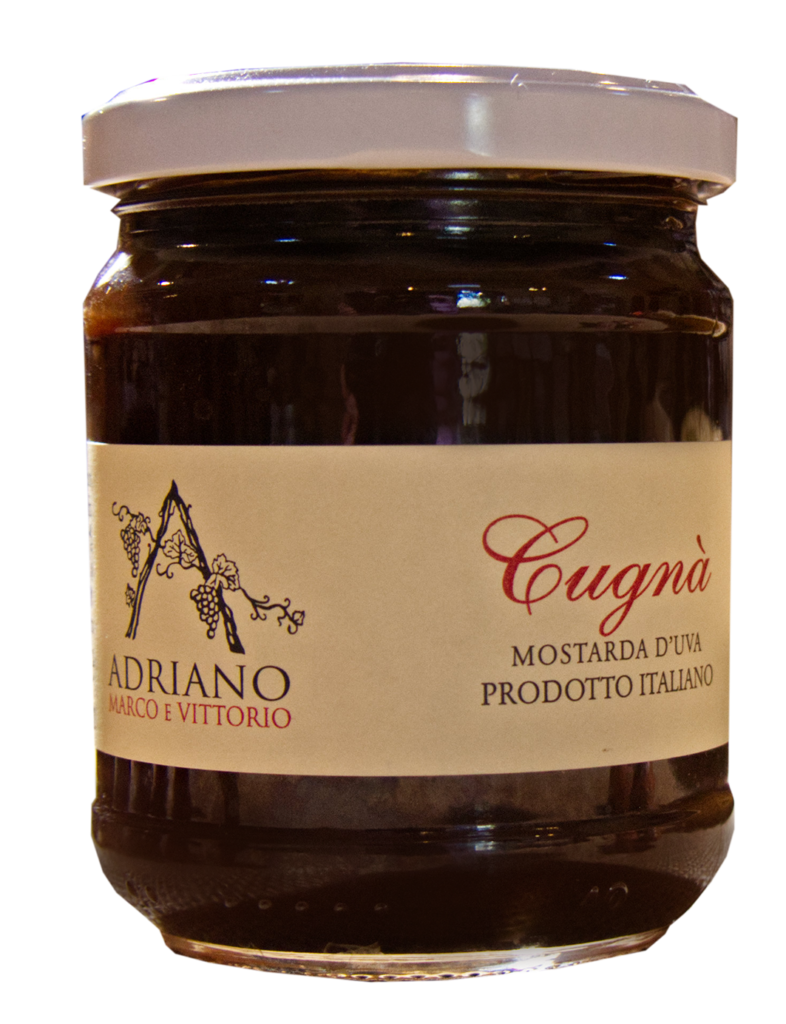
Cognà (but pronounced “Cugnà”) is a specific type of a relatively loose grape jam that was born in the Langhe, though nobody knows exactly when that was. It is typically produced in the months of September and October, and that temporal sequence provides a hint as to its ingredients, because the main ingredient of cognà is grape must. In fact, like many other Italian foods, cognà was born in poorer times out of the necessity to not let anything go to waste and to not throw anything away. Clearly, at a time when the refrigerator had not yet been invented and natural cavities out in the woods could only tale you so far, there was a real need to conserve fruit for as long as possible. Some fruits, like apples, have an amazing capacity to weather time well, but alas, that is hardly true of most fruits. And cognà turns out to be an excellent way by which to have a good supply of fruit-based food all year long. It is prepared by very slowly boiling the grape must (most often, it is the must of Dolcetto that is used, but Barbera, Nebbiolo and even Moscato are used too), even all day long, with local fruits such as the famous pera della madernassa (a high quality local pear), pera cotogna, apples, dried apricots, hazelnuts, and figs, but also walnuts, almonds, sugar, and spices (mostly nutmeg and cinnamon, but not just), though the truth is the recipe will vary from town to town and even household to household, given that each family matron would use whatever fruit was available to her to prepare this jam. And so, some examples of cognà you will taste will be richer and more complex than others, though not always necessarily better. This is why though most artisanally-made cognà examples all taste relatively similar, in fact no two are really exactly alike. To enjoy cognà at the utmost, pair it with soft and aged cheeses as well as using it like you would any other jam, by spreading it out on good quality bread. Producers of Barbaresco wine who make an excellent cognà: Adriano Marco e Vittorio
Gallette di mais (corncakes) and polenta (cornmeal)
Gallette di mais (corncakes) are high-fiber corn crackers, without additives, preservatives and dyes, and as all other corn products are, also gluten free. The reason why corn cakes are of such interest in Piedmont is not just because of their healthy status and their good taste, but because of the unique corn flours that are used to make the best versions of them. I’m not talking industrially-made corn cakes where the flour is any old flour: what I am referring to is the many corn cakes made in the Langhe that are born from unique high grade flours of native corn species, corn varieties that had long been very popular, abandoned in the mid-twentieth century in favour of American hybrids developed to produce more and be less prone to disease, but that were fatefully less flavourful. And so it is that in modern times, thanks to passionate, quality-conscious farmers, the native corn varieties have come back with a vengeance because of their superior quality aroma and taste profiles despite their lower productivity. You think Italy has a lot of native grapes? Well, you won’t believe the incredible number of different corns the country grows! Names such as Ottofile (Bianco, Rosso and Giallo, or in other words the white, red and yellow varieties of Ottofile corn, each with its own specific use in cuisine), Pignoletto (Rosso and Giallo, or in other words, the red and yellow varieties of Pignoletto), Ostenga, Nostrano dell’Isola, Rosso, and many more might not mean anything to you now, but they should, and most likely will, as people slowly begin to appreciate the higher quality and better taste of products made with better quality types of corn. Many of these corns are also known by names that are clearly associated with the Langhe, further underlining their link to this specific production area: for example, Ottofile Giallo is also known as Ottofile di La Morra and Ottofile Rosso is also known as Ottofile dell’Albese, which tell you all you need to know relative to where they hail from or grow (in fact every region of Italy boasts numerous local, specific, corn varieties). Some producers use these various corns to make corn cakes, that are essentially nothing but corn, salt and water compressed at very high pressure such that the heat generated melts the corn starch which glues the flour together into the patty or cake. A single corncake r galletta di mais (about 10 grams) has only 35 kilocalories so that these represent a yummy, nutritious and low-calorie supplement to any diet.
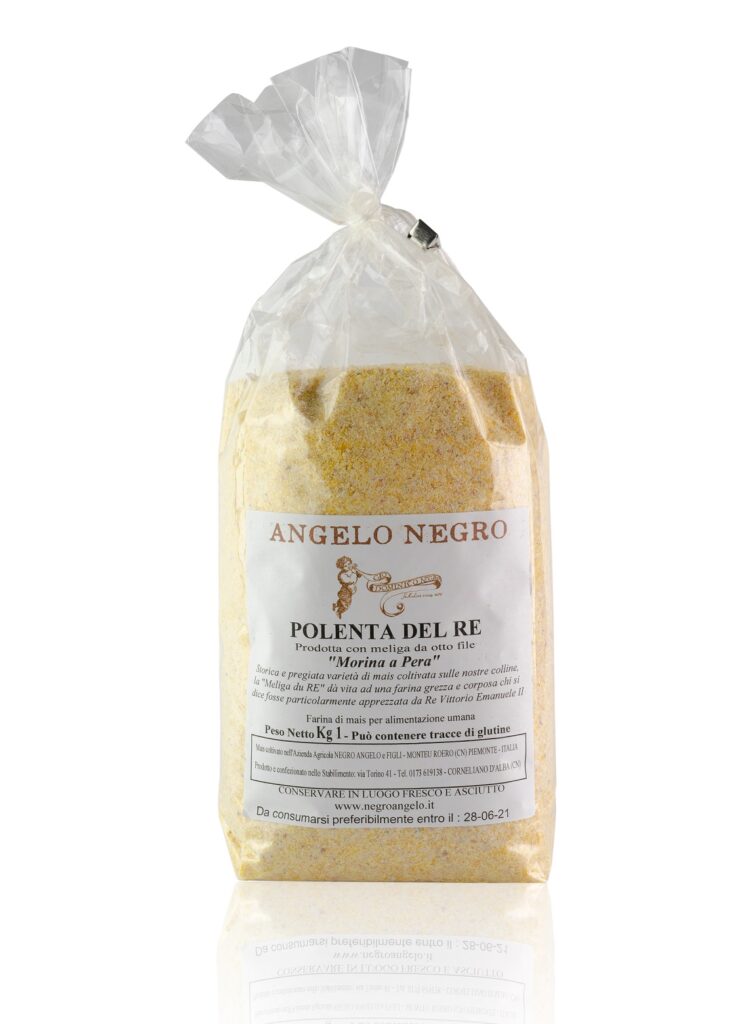
Other local producers prefer to make polenta or cornmeal with their corn flour. The latter was the most common food of Italian rural populations well into the mid-twentieth century, as corn costs less to grow and is more productive than wheat, It is also not just delicious, but for the most part also highly nutritious, save for a deficit in tryptophan (an amino acid) and that its vitamin B3 (niacin) is locked in an indigestible complex. This is why corn-intensive diets containing little else will unfortunately lead to pellagra, a disease characterized by dementia, dermatitis and diarrhea (and the prolonged deficit of those nutrients can lead to death, the fourth “d” in that ominous alliteration). Pellagra was very common in poorer times in the inhabitants of Italy’s countryside but is clearly no longer much of a problem (but back then, the poor folks did not have much else to eat and so their diet was way too unbalanced, never a good thing as we all know and any good doctor, not just me, will tell you). But Polenta is undoubtedly one of the greatest food inventions of mankind (just mix it, when still piping hot, with a good quality blue cheese and get ready to shift chocolate to second place in your personal scale of favourite foods!). It has a very ancient history, descending from the ancient Roman puls, a solid, creamy mixture of mostly chick pea, lentil, emmer wheat, and spelt flours that was an important part of the diet of legionaires. Later, Piedmont was the home of potìe, and later still more variations of the same: for example, Alba’s and Cortemilia’s “pucia” (a soft polenta made with a mix of corn and wheat flours enriched with cabbage and meat chunks); in the area of Alessandria, the “pute”, really not much different from the pucia (heaven help me if a little old lady from that area should read this, as she will no doubt think very poorly of me); in the Basso Canavese (the Lower Canavese area: for us wine lovers, the Canavese is the home of magical wines like Carema and Erbaluce di Caluso), there was the “putia”, basically a pucia to which were added pumpkin and not surprisingly rice (given the geographic area); in the Val d’Ossola (Ossola valley), the “pute” with cheese and butter; and the “puut” of the Monferrato, perhaps the poorest version of all, simply cooked in milk and with no other condiments. Producers of Barbaresco wine who make excellent corncakes: Rivetto (importantly, Rivetto’s corncakes are made with 100% organic certified and biodynamic cultivation of the corn; the estate grows a number of different varieties, including the Ottofile, Pignoletto, Rostrato and Bianco Perla). Polenta: Angelo Negro (Angelo Negro’s polenta is called “Polenta del Re”, as it is made with stone-ground Ottofile corn that produces a flour that it was particularly appreciated by King Vittorio Emanuele II, hence the name “del Re”, or “of the king”).
All the above products can be easily found directly at the wineries or in high quality food emporiums, but can also be very easily found at the Enoteca Regionale del Barbaresco. The Enoteca Regionale del Barbaresco has been working since1986 to promote Barbaresco area’s wine production, and about 140 local wineries are associated with it and its activities. The promotion and enhancement of Barbaresco and the territory of which it is an expression take place through the organization of many different events, such as Espressione Barbaresco, Barbaresco a Tavola, and Piacere Barbaresco, all of which I heartly endorse. But above all, do not forget the tasting activities organzied at the Church of San Donato in the town of Barbaresco, or just simply make sure you drop by the beautiful Enoteca anytime you visit the Langhe, for it represents the absolutely best way to taste an infinte number of Barbaresco wines from producers you may never have heard of. I have been doing so ever since the 1980s and I can vouch for the fact that the Enoteca and its personnel have accompanied me in my lifetime of learning about Barbaresco, its wines, its food, and its people. It is one of the best run, by far, such Enoteche Regionali in Italy, and I am not the only one (not by a long shot) who believes this.

 中文
中文
